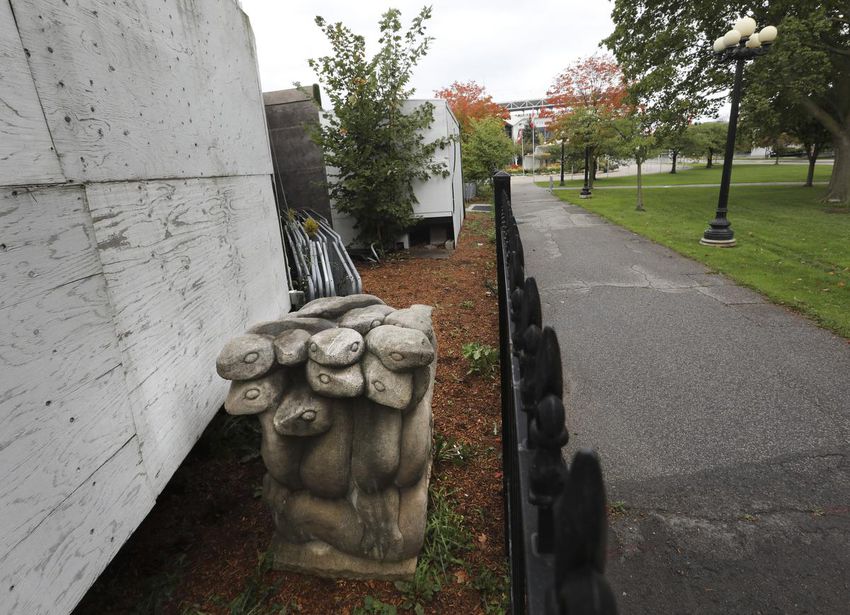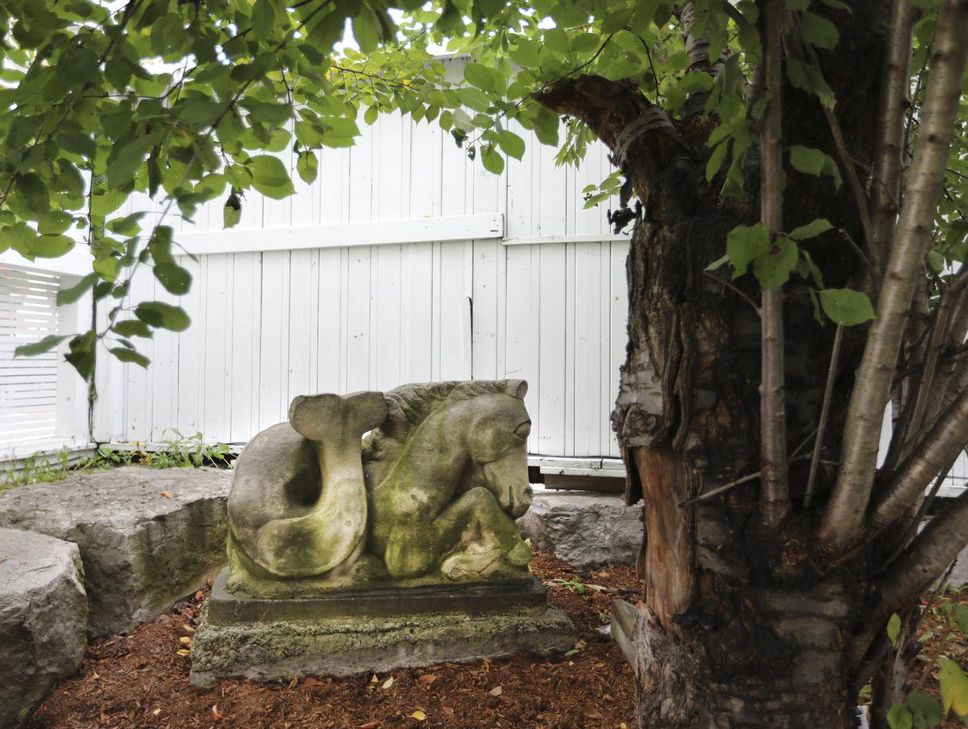Perhaps one of the greatest challenges in the life of world skydiving champion and Order of Canada winner Kathy Sutton has been the seven-year battle she fought with a nightclub over her father’s legacy.
Sutton, daughter of the acclaimed Canadian sculptor EB Cox, spent most of her sixties fighting to restore public access to Cox’s masterpiece, “The Garden of the Greek Gods.” Since 2014, his father’s work has been locked in the courtyard of the Toronto Events Center (formerly Muzik Nightclub) on the grounds of the Canadian National Exposition, private only to club patrons and those who stole glimpses of the few pieces. smaller than can be seen externally through barred doors.
That’s where the 20 sculptures from the garden of Greek mythological figures, carved with hammer and chisel from limestone in the 1960s, on public display since 1976 and donated to the city of Toronto in 1979, remain today, but not for long. .
In July, Sutton finally achieved his wish and, by extension, the wish of his late father, who had always said in life that he wanted his Greek gods to be accessible to the public, in a place where children could play with them.
The Toronto council then gave final approval to a long-term lease between Exhibition Place and the Toronto Event Center; as part of this, at a cost to the city of up to $ 500,000, the gods will be moved to the Rose Garden at Exhibition Place next summer, where Cox initially envisioned his work being exhibited. After years of sustained lobbying by Sutton and his followers, the gods finally go on an odyssey.
The city owns the sculptures but was unable to get them back until then because they were included in the lease for the Toronto Event Center. Sutton said the lease agreement came as a surprise to her, her family and the city’s arts community.
“There was no attempt to inform or consult the artist’s family,” he said. “The city’s Culture Division, which oversees Toronto’s public art inventory, was not consulted or informed prior to the construction of the courtyard. The lease was approved by the city council, but it is not clear if the members found out that the art was included ”.
Jeff Duns, who runs Toronto’s Ingram Gallery, which deals with much of Cox’s work, said he was shocked and dismayed when he discovered that “The Garden of the Greek Gods” would no longer be accessible to the public all those years ago, feelings that barely dissipated.
“Being able to walk through the garden as it was before the nightclub came along was magical,” Duns said. “It was a lot that brought people, people who were very sad to hear this story, who provided a wave of support for years.”
Duns said that “The Garden of the Greek Gods” is not only a beautiful work of art, it is also a piece of history and the “most monumental” work Cox has ever produced.
“It meant a lot to the people who went to the CNE over the years and were able to get on them, take photos with them, enjoy them, talk about what they wanted to say,” he said.
For Duns and many Canadian art historians, Cox is the greatest stone sculptor the country has ever seen. Some consider him an honorary member of the Group of Seven; he is well known for having carved his tombstones.
“I think he probably understood how to free what he needed from the stone, the best of all I’ve worked with,” Duns said. “He had a vision, he could see things just by looking at a piece of stone and he could release some of the most beautiful things.”
Sutton said he was enormously relieved when he heard that the garden would be relocated, but is trying to moderate it.
“I won’t believe it will really happen until it does,” he said. “My hopes have been raised before. The tenant has made statements in the past that he is willing to release the sculptures and that did not happen. “
Sutton believes the owner of the Toronto Event Center has held his father’s job hostage all these years as a lever to secure a lease extension.
Although the gods signed the contract with what was then Muzik in 2004, it wasn’t until a decade later that Sutton began to worry. That year, the club built its courtyard extension, effectively privatizing historically public works of art by fencing them off.
“I realized that art was at risk of being damaged, of being hidden from public view,” Sutton said. “At that moment I decided that I had to take a stand and do everything I could.”
Sutton’s campaign was tenacious and multifaceted. He spent years meeting with Exhibition Place staff and city councilors, submitted access to information requests for more information on the club’s lease, requested written support from the Art Gallery of Ontario and the Society of Sculptors from Canada, created the social network “Free the Greek Gods” media campaigns, sent “countless” emails to the mayor and even connected with groups of local residents and held a public art appreciation event in the courtyard. from the Toronto Event Center.
“It was tough, Kathy was having a hard time watching her father’s legacy unravel,” Duns said. “I feel like the city let us down, let down the people of Toronto, by spending so much time correcting a mistake that was evident from the beginning.”
Sutton said he felt powerless in the face of “heavy hitters,” including councilors who preferred to side with business owners over advocates of public art. At one point, she felt “cornered” and “intimidated” by a former councilor, who said he tried to discourage her cause.
“A lobbyist for the tenant approached me once after a meeting at City Hall and asked how I felt about them getting a longer lease if they released some of the smaller sculptures,” he said. “I said, ‘That’s like letting women and children get out of a hostage situation.’
Despite the effort, the art was still out of reach, and in 2018 Sutton’s fears of harm came true. Hercules, the most imposing of the garden gods at 11 feet and nearly five tons, suffered significant water damage and had to be removed for repairs.
“I think they really liked the sculptures, but they sure didn’t treat them well,” Sutton said. “The feet of many of the sculptures were submerged in humid conditions for years, which is why Hercules was so damaged. At one point, they cleaned the sculptures with a commercial pressure washer, which removed the patina and damaged the pieces. “
While she attributes the poor care the sculptures got to ignorance rather than malice, she still felt terrible, Sutton said, seeing her father’s art, which had thrived in sunlight for decades, succumb to the injuries behind bars, away from the gazes that adored her.
“Art was not respected in that place,” he said. “The people who go there for a pool party or to drink or eat, they are not there for the art.”
Sutton said he doesn’t want to wallow too much in the past. You can’t go back in time to free the sculptures any faster, and once they are removed from the club, they will receive the attention of one of the best art restorers. After that, they’ll be exactly where Cox would like them to be, he said, overlooking family picnics as the kids climb them.
“I have a vision to drive along the Lakeshore and to be able to see Hercules,” Duns said. “I’m very excited for that day, when everything is finally finished.”
Reference-www.thestar.com


